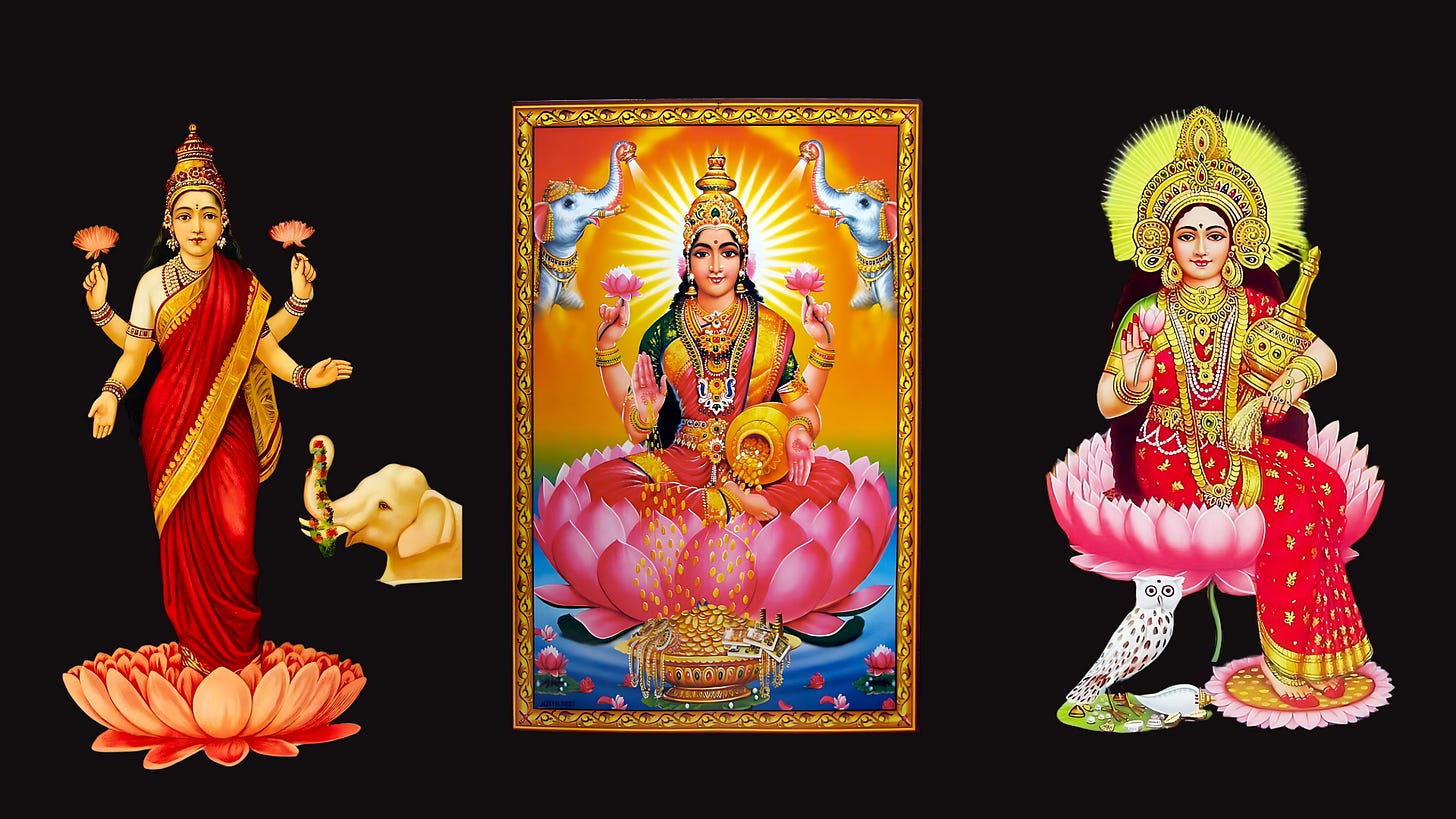Ten years after I first studied Maslow's hierarchy of needs as part of the Organisational Behaviour course, I looked at it more deeply recently.
Abraham Maslow was an American psychologist, who mapped the human needs and motivations in the form of a pyramid. Look at this pyramid, where each level represents something that we are motivated to fulfill.
It starts with our basic survival needs at the bottom and moves up to the more complex needs like self-actualization and transcendence. The idea is that if the bottom-level needs are unmet, we will be unable to fulfill our higher-level needs.
I always wondered why there are so many Gods and Goddesses in Indian mythology. I now realize that each of them symbolizes the fulfillment of one or the other human needs.
Then I looked closely at Goddess Lakshmi, who is said to shower her devotees with wealth, abundance, and stability. In my analysis, she features at two levels in the hierarchy. Her imagery is rich with multiple symbols like the lotus, hand gestures or mudras, gold, and the owl.
She even has a shadow, who is a messenger against disregard for ethical prosperity.
There is an interesting story about how she emerges from the Churning of the Milky Ocean in the Mahabharata, Bhagvata Purana, Vishnu Purana, and others and how she chooses to be with God Vishnu among all the Gods.
Her influence goes beyond Hinduism to Buddhism and Jainism. Therefore, the blessings of Goddess Lakshmi are important even for those who want to practice spirituality so that lack of resources isn't an obstacle in their practice.
Watch the video on YouTube:







